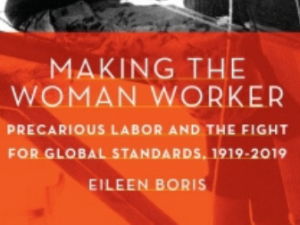The rise of the “gig economy” has engendered much fear in recent years, as more and more workers are pushed out of full-time jobs into occupations offering no guarantees and few if any benefits. While this is widely portrayed as something new and ominous, Eileen Boris would like to remind us of a group that has been working under such conditions for a very long time:
Millions and millions of the world’s women.
“Historically, most women were not in jobs that came under labor standards, such as minimum wages or occupational safety,” said the UC Santa Barbara Distinguished Professor of Feminist Studies and holder of the Hull Chair. “They were not unionized. If there were labor laws on the books, they didn’t apply to them. They could be fired at will. They were often defined as independent contractors.”
Previously, Boris studied one large group of workers who fall into that category: Home-based piece-work laborers, mostly women and often mothers, who earned a set amount for each piece of clothing they created. She also co-authored a history of home health care workers. Today, her focus has expanded from the United States to the world.
In her new book, “Making the Woman Worker: Precarious Labor and the Fight for Global Standards, 1919-2019” (Oxford University Press), Boris presents an intersectional history of labor standards. The evolution of these standards, and the discussions surrounding them, reflect changing economic conditions and persistent gender constructions — as well as still-unresolved inequalities between men and women, and among women by race, class, and nation.
She opens her first chapter with a statement British trade unionist Mary Macarthur made at the first International Labour Conference in 1919. “When the man comes home at night, his day’s work is done,” she declared. But due to her duties as mother and homemaker, when a woman worker “leaves the factory, she usually goes home to begin a new day’s work.”
Sound familiar?
“I like to tell people I have only two topics — home and work — and they’re really the same,” Boris said. To rectify gender inequality, she added, “It’s very important to expand the definition of work.”
“I argue in the book that labor standards for women workers are really about the allocation of women’s labor power, whether it’s at the home or workplace. If you don’t have social support for housework and care work, it’s very hard for those who undertake such labor to be employed in the most productive and efficient way."
Click the link below to read the full article.







